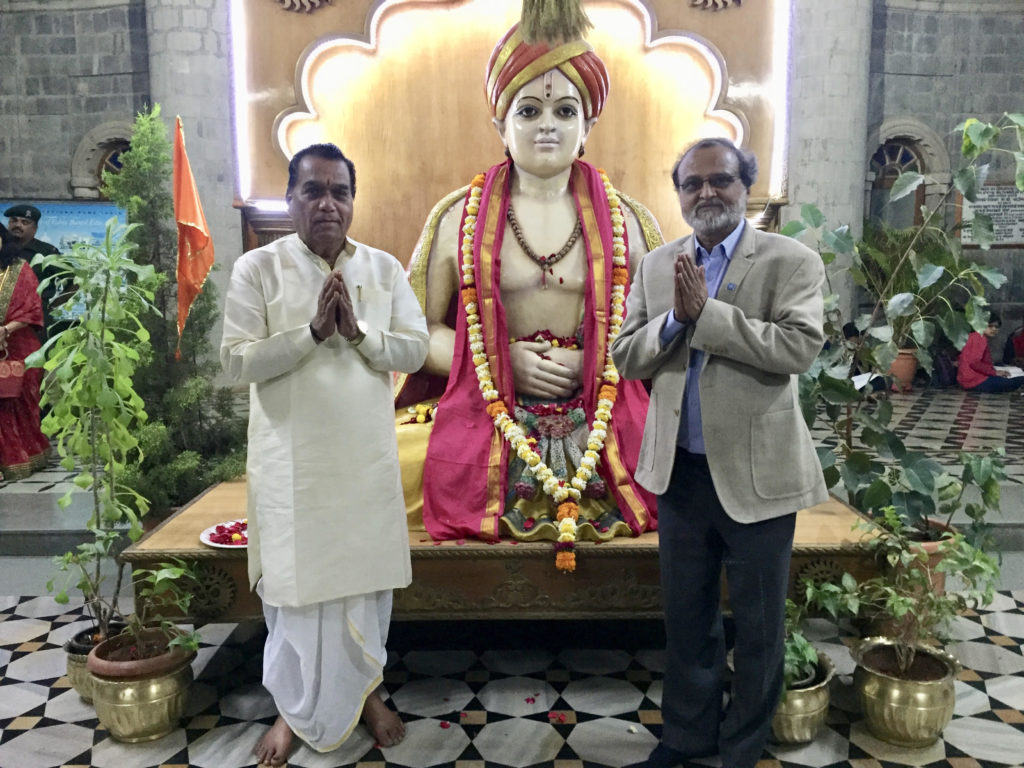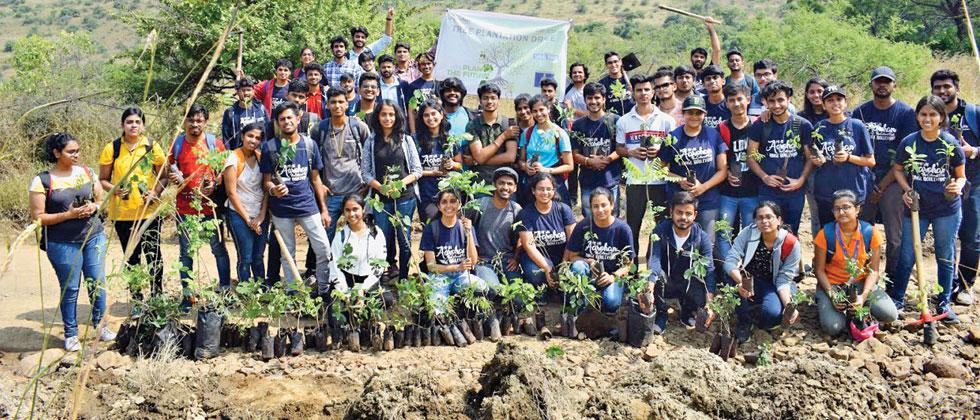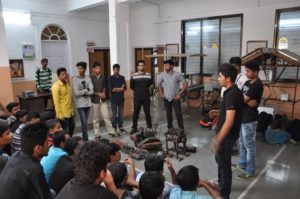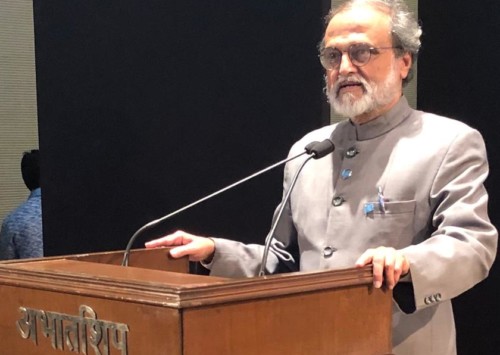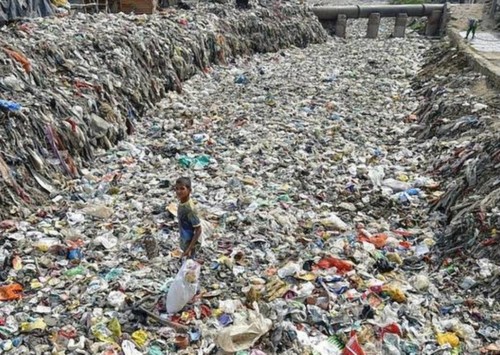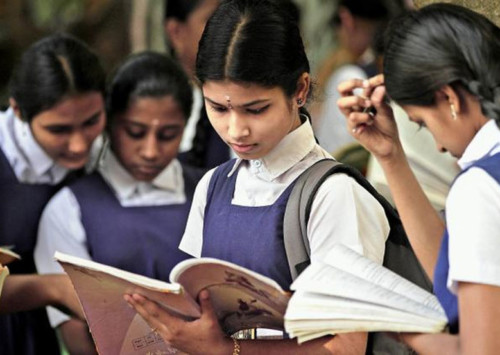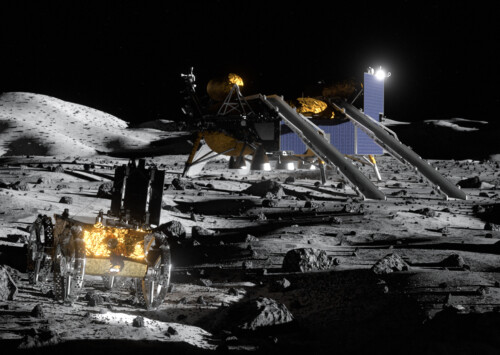Interview: Rajendra Shende, chairman, Terre Policy Centre, member of governing body of World Peace University, Pune
Hailing from a spiritual family, living in a small village in Maharashtra, but equipped with an engineering degree from a reputed college, professor Vishwanath Karad, a leading educationist, has integrated spirituality, science and sustainability with the object of promoting integrated and inclusive development. In an interview, Rajendra Shende retraces the journey of Karad and his vision.
World Peace University is rather a unique name for a university. What inspired Vishwanath Karad to opt for this name?
A professor who comes from the background of dealing with and learning from the nature, has come from the background of a farmer, probably realises that while teaching the science of physical entities, there is something that we can call as invisible forces that keep on acting on these physical entities as well as on various aspects of the human kind. And focusing only on those physical entities makes our thinking very materialistic and it leads to greed and conflicts. Professor Karad gives the examples of the laws of thermodynamics or the laws of Newton that he taught in engineering colleges, they are all related to the physical entities and explain how the physical entities behave. We have forgotten to live in harmony with the nature and hence moving away from the peace. He is convinced that engineering education need to be dovetailed with the teachings of the nature, the spirituality to move towards the world peace.
As someone who comes from proximity to the nature and then joins the educational field and becomes a professor, Karad realises that over emphasising on physical entities and materialistic consumption causes the conflicts that may be related to geographical area, it may be related to trade, it may be related to the economics of it, it may be related to grabbing the opportunities to becoming rich and all these cause the conflicts. Even the natural science that is being taught today focusses on the physical part of nature. The teachings from the nature are overlooked. We leap in the space, but we do not go down to the roots of the trees to understand how the trees survive in adverse condition and how they die due to excess nutrients!
Without undermining the importance of physical entities there is a clear need for education to begin looking at the non-physical entities like spiritualism, the feelings, the passions, the aspirations and the hopes which would help us and the future generations. Imagine an education about a comprehensive and all-encompassing ecosystem and nature is delivered as foundation to teach the physical laws on temperature, energy and entropy. That would pave the way to attain the peace, which is in fact the ultimate goal of Sustainable Development Goals (SDGs) that United Nations is aiming under ‘Agenda 2030’ and the ‘Future we want’.
If you take Sustainable Development Goals, one of the important goals, that is the goal number 16, is related to the peace and building the institutions that promote peace. I feel that founder of this World Peace University (WPU), is in fact attempting to contribute to the goal by establishing an institution that is focused on science, sustainability, spirituality with the ultimate objective of global peace.
So, is there something in the curriculum or in the day-to-day life of the students in the university which goes beyond what we can probably call normal education?
I think you can call it a top-down as well as a bottom-up approach in going beyond the business-as-usual in delivery of the education. Top-down, because the founder has been the driving-force in order to establish this World Peace University. Not that the bottom-up approach has arisen because the students or their parents demanded it, but the degraded situation around us, the deteriorating world around us demands it. The situation in the world is the driver of what I call is the bottom-up approach. So, while the Sustainable Development Goals are taught in WPU’s the classrooms through the curriculum in terms of what those goals are, what they are trying to attain, what those 169 targets are, the 234 indices that have been created to measure the targets. But more than that what is needed to be done for short term and long term impact is to develop the minds and the personality of those students to make them ‘SDG ready’. That is an exercise that cannot be conducted in a classroom.
The World Peace University started fairly recently, in 2017 on June 5, which is also the World Environment Day. On that day the inauguration took place and I was there. That is the day on which the founder received an official permission from the Indian government to establish the World Peace University. So, the university is very young, we’re just two and a half years old, but now it is going to disrupt the way the education is being delivered. And that’s what is exactly in the mind of professor Vishwanath Karad. He would like to see the WPU as knowledge centre that moulds the minds of the youth starting with science then spiritualism and then sustainability. With his support, we in the governing body are trying to inculcate not only the transformation in the curriculum, but also to make transformation from curriculum-centred education to the commitment-centred wisdom, from a closed-space, closed-mind claustrophobic teaching to open space, open mind and knowledge exercise. The idea is to go beyond the borders of the class rooms and even out from the confines of the campus and penetrate into the real-regime of the society, the market place where the transformed mind has to make further transformation and mutations to the business-as-usual.
Incidentally, on the day the WPU was founded, minister Javadekar also inaugurated the Smart Campus Cloud Network (SCCN), a global network of the universities is the transformative idea of the TERRE Policy Centre, a not-for-profit organisation. Now more than 72 universities including seven universities abroad are in the network that encourages the activities in the campus to promote implementation of SDGs.
Though two and a half years is not a long time, but have there been any notable actions or initiatives by the students and not by the university, that shows that the message of sustainability, peace and non-materialistic approach is getting into their minds and also inspiring them to do something based on this?
Yes, two and a half years is not a long time, but it is also a significant amount of time considering the time allotted to the world to attain the Sustainable Development Goals. We have to do that by 2030. Just 10 years from now. That’s where the founder’s scale of thinking and speed of actions come in handy.
The WPU started in 2017 and at that time, we had just about 13 years to meet the SDGs. The time is indeed the constraint considering the challenge of global goals. professor Karad considered my proposal of making the campus of WPU as the laboratory to meet the relevant SDGs. We prioritised the campus activities to be performed by the students and faculty. He believed that the formidable tasks need collective actions and partnerships. He knew that if we have to go far, we need to walk together. And if we need speed, the top leadership has to enhance the commitment.
So, yes, WPU under a committed leadership has achieved quite a few things even in this short span of time. Here are some of the examples how the SCCN has progressed in the WPU campus.,
I need to now give a very brief background of SCCN. It is a global network of campuses which share their successes and challenges in carrying out the SDGs related activities in a campus that engrains sustainability and contributes towards Sustainable Development Goals.
The core group of the students and faculties after 2017, began to use SCCN as a toolbox to move towards sustainability by prioritising the activities, benchmarking by establishing the smart meters and conducting the base line survey.
For example, the core group decided to work on priority goals clean energy, the climate change, well-being and health and equal access to quality education. Similarly, there are the goals related to the water, land and finally peace and building the institutions.
So, let’s take one of the important things that the campus has done, which is related to energy. The first thing was done on June 5, 2017 when the WPU was founded, professor Vishwanath Karad declared that in MIT group of institutions, which has about 64 colleges and eight schools, making a total of 72 education campuses, each and every campus will follow the path of sustainability. He also that the entire MIT group will work towards 3S – that is spirituality, science and sustainability. And so, he decided to take up the first issue that was related to energy. Remember one thing, he was the professor of thermodynamics and in the thermodynamics, we have three entities around which thermodynamics revolve. They are temperature, energy and entropy.
He decided to take up energy first as we know that the temperature of the earth has been rising and environment is getting disturbed due to global warming and a lot of this comes from the use of energy. So, the fossil fuel energy which is causing this global average temperature to rise, he decided to first benchmark the energy consumption in the campus and he turned towards two things – one is making the energy use efficient and second to start using the renewable energy in the campus.
So, in one of his campuses near Pune, where the World Peace Prayer Hall with the world’s largest dome, was being built in 2017. The campus and the dome were completed in 2019. Since it was a new campus, he decided to measure the energy being used in the campus and then start reducing the use of fossil fuel energy. Today, that campus relies on renewable energy for 56 pc of its total energy consumption. The energy consumption and the source of energy being consumed on the campus is being constantly measured and managed through an online application in real time.
Similarly, in other campuses not only is the use of renewable energy rising, but also energy efficiency has been raised. So, the campuses managed to cut their total energy consumption just by focusing on efficiency. So, through these measures we brought about behavioural change and our students have been fully part of this change as they are the ones using the campus. And all the time they have also been learning not just about energy and thermodynamics, concepts that have been around for centuries, but also the state of the art and front-end technology like internet-of-thing and cloud-networking. So, this is how we keep our students interested in science and sustainability and this is how this dome symbolises sustainability, spirituality and science.
What are the other transformations in the Campuses?
Another unique aspect about our group is that while every large company in India now produces a sustainability report, no education institute does the same. However, the WPU has been producing a sustainability report right from when it began operations. This itself is an achievement. And the second thing is that while energy consumption of water has reduced, but there are other challenges in front us, such as water consumption, which incidentally is also something that we closely monitor and measure. We are trying to find out now whether it is a per capita consumption or the overall consumption that has increased. So, we have yet to work on that, and the SCCN idea coming through me, through my organisation, TERRE Policy Centre, policy centre where we have now more than 72 universities including seven universities abroad. These are in this global network trying to contribute to the campus activities linked to the sustainable development goals.
You talked of the dome being spiritual and sustainable. But are these two things different? At least according to Indian culture, isn’t spirituality integrated with sustainability and vice-versa?
Right. I think this is a wider subject, but let’s capture it in a small way. The first dome was developed in the second century when there was no science available in terms of how much steel to be used or other materials. But it was only to see, to look at the dome, and look at the sky, look at God. But as an IIT alumni, I recall a very typical question which comes in many of the IIT entrance exams. What is that shape that has maximum volume and a minimum surface area and the answer is a dome. Look at the way our forefathers have looked at the domes. I mean, why they thought, that you should have dome above the churches or dome above the temples and mosques. Because it gives that kind of message that if you want to have the maximum energy with minimum use of materials or materialism, that thing brings the sustainability and that is what a dome represents. So, while the spirituality was the basis, now in today’s world the dome represents sustainability. Because if you see one of the sustainable development goals is the sustainable production and consumption. So, anything we want to build will have to have a minimum production and optimum consumption. Thus, today, if anything can represent sustainable development goals or sustainability, it is a dome.
What does the dome at the Pune campus symbolise and more importantly, do the students get the symbolism?
So now, one of the reasons for doing this interview is to inform about the way to communicate to the students. Probably students are yet to get that kind of message, but as we go along, we will get that message through to them. professor Karad has named the space below the dome after Sant Gnyaneshwar, a famous 13th century Marathi saint and philosopher. And below the Sant Gnyaneshwar Prayer Hall is a library that is called the Knowledge Centre as it contains thousands of books representing all religions from all over the world. The Centre also houses 54 statues of great people from the around world. So, a smart student who will probably be able to synthesise all these structures, and the symbolism, to make themselves aware that this is the message of the sustainability and this is what the great people have talked about, whether it is Einstein or Sant Gnyaneshwar, I see there is a convergence point.
Sant Gnyaneshwar is not known only for his philosophy but for his pathway of educating his followers, the common people, about the teachings of the Bhagwad Gita, the Sanskrit scripture which is part of a Hindu epic. He managed to do that in the simplest language which was understood by the common people. Sant Gnyaneshwar, according to me, did not present new knowledge, but made it accessible and simple enough to be understood by the common people, in a language that a farmer or a worker could understand. That was a period, in the 13th century, when knowledge was being used as a weapon by the elites and the common people were being left behind. Incidentally, even today the situation prevails across the world and that is why through the sustainable development goals, the United Nations is trying to say the same thing. That the planet and its future is not an issue only for the elites to decide, but it is an issue that concerns and impacts everyone, especially the poor. So, by naming the prayer hall after Sant Gnyaneshwar, what we are trying to say is that we need to learn science so that we can apply science for benefit of the common people and that we need to make technology and science simple enough in order to reach out to the common persons and help them understand what is means. Einstein said the same thing. He said that any fool can make the things complex, but it takes genius to make the things simple.
If you look at all the religions, they are also attempting to give the messages to the common people. They are not for the elites. It so happened that the elites have grabbed power through knowledge and spirituality and hence when the elites started going to the temples they prevented the common man from going there. That’s where the inequality started. So, professor Karad is trying to reverse the trend and that is why the World Peace prayer hall is open to all, not just the students or faculty. Anyone from anywhere can come and pray or read the books and scriptures. So, this is the kind of the message that he is spreading that has a great symbolism in today’s world which is full of conflicts, full of inequality, full of divisions. So, here at the WPU, the cement that has been used is the cement of harmony. Whatever steel professor Karad has used, he has used it in an optimum way but there is a steel of determination and then he is creating an ecosystem around it for the dome of peace and sustainability.
Professor Karad has also come up with the concept of teaching with symbolism. He earlier built Swami Vivekananda Hall that symbolises the sky with 27 lunar mansions or Nakshtra in Sanskrit.
Do you also have students from outside India or just from India currently?
There are students from abroad, mainly from South Asia, notably Iran, Afghanistan and some from Bangladesh. But soon, we will attract researchers and professors from Europe, Japan and the United States as well especially as we continue to communicate about the unique concept and origins of the WPU. And one research that we need to do, and now I am coming to a very serious thing, is how nature behaves, because in all our Vedas, all global religions, our learning has come from the nature. Teaching from the nature has not stopped, however, there are no takers for learning. In today’s world of conflicts and divisions, it is even more important that we learn from nature. We need to re-educate the people that all the religions and faiths of the world converge to the bond between plant’s ecosystem and humanity. Human quest is for only one thing, that is, peace. Another issue that needs more research in today’s world and more focus in the state of the nature and the innumerable things that we can continue to learn from the nature.
Today, the world is talking of carbon neutrality and here at the WPU, professor Karad is not only talking but acting on carbon neutrality. At the same time, he is also promoting religious neutrality and social equality. Here, we can propagate and teach that all the philosophies of humanity, all the religions of the world and all the sciences ultimately lead to the same destination. Peace and sustainability.


